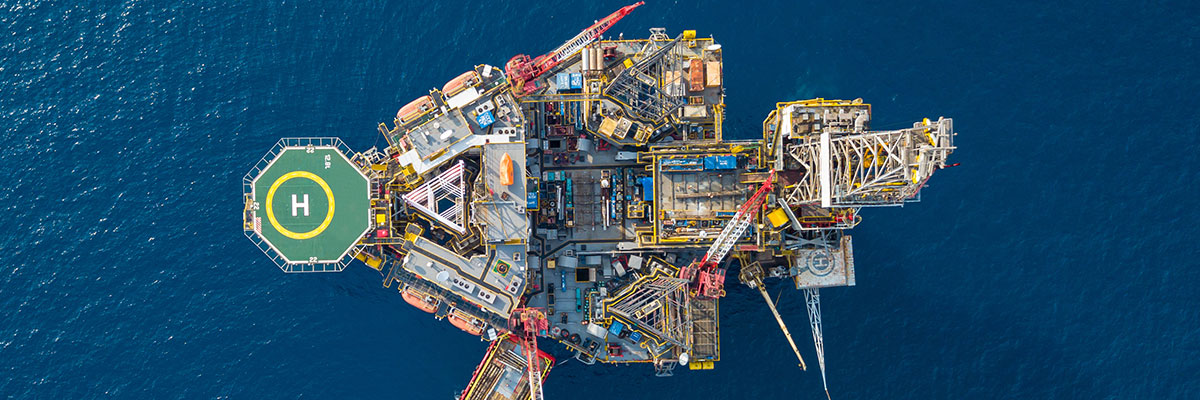Esittelyssä patenttia odottava vallankumouksellinen korkean lämpötilan korroosionestoaine: TETRA X
Phillip Vincent | Engineering Services Manager | 23. lokakuuta 2024

Korroosio
Maailmamme polttoaineena käytettävien hiilivetyjen kehittäminen aiheuttaa lähes aina kosketuksen monien syövyttävien lajien kanssa: vesi, hiilidioksidi (aiheuttaa makeaa korroosiota), rikkivety (aiheuttaa hapanta korroosiota), orgaaniset hapot, kuten muurahaishappo ja etikkahappo, ja suolat, kuten natriumkloridi, kalsiumkloridi, magnesiumkloridi ja ammoniumkloridi, jotka kaikki voivat aiheuttaa kaivoissa käytettävien metalliputkien korroosiota (Perez 2013). [1]
Korroosio on vaarallista, sillä yli 25 prosenttia öljy- ja kaasuteollisuuden turvallisuusonnettomuuksista johtuu tiettävästi korroosioon liittyvistä vioista (Solovyeva, et al 2023). [2] Metalliputkiston tai -liittimien murtuminen voi irrottaa metalliromua ilmaan ja vapauttaa kuumia nesteitä ja kaasuja.
Korroosio on myös kallista, kuten käy ilmi viimeisimmästä NACE Impact -tutkimuksesta, jossa arvioitiin, että korroosion maailmanlaajuiset kustannukset öljy- ja kaasuteollisuudessa olivat 1,372 biljoonaa Yhdysvaltain dollaria vuonna 2013; tämä oli 11 vuotta sitten, joten kustannukset ovat nyt varmasti suuremmat (Solovyeva, et al, 2023). Korroosio voi edellyttää paitsi yksittäisten kaivon osien, kuten metalliputkien, poraputkien ja vaippajousien, kallista vaihtamista, myös paljon kalliimpaa skenaariota, jossa tuottavan kaivon käyttöikä päättyy ennenaikaisesti.
Estojen rajat
Teollisuus käyttää useita ratkaisuja porausreiän komponenttien korroosion lieventämiseksi: erikoistuneita korroosionkestäviä seoksia, suojapinnoitteita, katodisuojausta, ei-metallisia komposiitteja ja korroosiota estäviä lisäaineita, joista viimeksi mainittuja yhdisteitä lisätään porauskaivoissa käytettäviin eri nesteisiin. Korroosionestoaineet ovat edullisuutensa ja helppokäyttöisyytensä vuoksi yleisimmin käytetty menetelmä, erityisesti verrattuna kalliisiin erikoisseoksiin.
Korroosionestoaineilla on kuitenkin rajoittavat parametrit. Ne on erityisesti muotoiltava siten, että ne ovat yhteensopivia niiden nesteiden ja geologian kanssa, joissa niitä käytetään, ja niillä on lämpötilarajat. Kun alalla porataan yhä syvempään ja näin ollen yhä kuumempia porausreikiä, lisäaineen ylempi lämpötilarajoitus voi poistaa sen käytöstä, jolloin operaattorin on turvauduttava kalliisiin erikoismetalliputkiin.
Toinen rajoitus on se, että useimmat nykyisin saatavilla olevat korroosionestoaineet on valmistettu morfoliinijäämistä, joiden tarjonta on yhä rajoitetumpaa, koska lähteet hupenevat ja käyttöä säännellään yhä enemmän.
Laajentuva esto
Vastatakseen syvien ja kuumien kaivojen korroosion ehkäisyn haasteeseen TETRAn tutkijat ryhtyivät kehittämään korroosiota estävää lisäainetta, joka kestäisi korkeitakin lämpötiloja erityisesti silloin, kun sitä käytettäisiin erittäin korkean tiheyden bromidipohjaisten nesteiden kanssa, joita tarvitaan hyvin syvien porauskaivojen korkeiden hydrostaattisten paineiden kompensoimiseksi.
Tutkimme "out-of-the-box" -lähestymistapaa, joka on TETRAn pitkäaikainen käytäntö. Kun olimme tunnistaneet kaksi kemiallista ehdokasta, teimme laajoja testejä kolmen vuoden ajan.
Tuloksena kehitettiin TETRA X -korroosionestoaine, joka on patentoitavana oleva vallankumouksellinen lisäaine, joka tarjoaa parannetun korroosiosuojauksen korkeissa lämpötiloissa ja korkeassa paineessa jopa 204 °C:een (400 °F) asti. Laajat testit ovat osoittaneet, että lisäaineen teho ja lämpöstabiilisuus ovat huomattavasti perinteisiä inhibiittoreita paremmat, ja se voi vähentää lisäinhibiittorien ja muiden lisäaineiden tarvetta. Lisäksi TETRA X ei vaikuta nesteen pH-arvoon, ja se on yhteensopiva useimpien elastomeerien ja muodostumisnesteiden kanssa sekä suuritiheyksisten ja erittäin suuritiheyksisten bromidipohjaisten nesteiden kanssa (jopa 17,5 lb/gal), kuten TETRA CS Neptune.

Kaikki testaukset tehtiin N80-miedon teräksen koekappaleilla, joissa inhibitorin pitoisuus oli 0,5 tilavuusprosenttia.
Muihin inhibiittoreihin liittyvien toimitusketju- ja sääntelyrajoitteiden poistamiseksi olemme valmistaneet TETRA X:n runsaista, alueellisista lähteistä peräisin olevista ainesosista, mikä myös pienentää sen hiilijalanjälkeä. Lisäaine ei vaadi erityisiä sekoitus- tai varastointilaitteita, ja se on ympäristöystävällinen. Sitä ei voi olla rakastamatta?
"Rakenna parempi hiirenloukku, niin maailma saapuu sitä käyttämään." Nykyisten öljy- ja kaasutoimintojen "hiirenloukku" on korroosionesto, ja uskomme, että olemme kehittäneet mullistavan tuotteen. Kemikaalien käyttö on sallittu Pohjanmerellä, ja odotamme innolla sen menestystä kaivoissa kaikissa offshore- (ja onshore-) ympäristöissä ympäri maailman.
Loppuviitteet
[1] Perez, T.E., 2013, "Corrosion in the Oil and Gas Industry: JOM, Vol. 65, No. 8., s. 1033-1042.
[2] Solovyeva, V.A., K.H. Almuhammadi, W.O. Badeghaish, 2023, "Current Downhole Corrosion Control Solutions and Trends in the Oil and Gas Industry": A Review," Materials, Vol. 16, No. 5.


